Food before one is for…“insert commonly heard answer here”.
If you said “FUN” – you guessed right!
Sort of….
Although I totally understand the sentiment behind this well intended phrase, it’s not the most accurate.
Unfortunately, defaulting to “food before one is just for fun” often leads parents to believe that there is no need to really worry about solids before one year of age. Resulting in them offering the odd meal here and there, introducing some foods and not others, and not researching a proper protocol or getting all the details, like what’s found inside my baby led feeding course.
Food before one has many purposes, and it IS important that your baby is getting lots of practice. Let’s go through each of the reasons so you’re prepared for this exciting journey with your little one.
But first – if you’re feeling stressed or scared about introducing solids to your baby, especially finger foods, or if you’re feeling stuck serving purées, register for my free workshop, “Baby Led Weaning…but make it purées! How to move from purées to finger foods – without the fear!” You’ll learn all about gradually moving from easier to more advanced textures, so food before one won’t seem so daunting.

The fact is, “food before one is just for fun” has gained immense popularity in recent years. Parents often fall back on it as reassurance during those first 6 months of offering solid foods, if things aren’t going as planned.
The manner, and frequency, with which it’s used leads many parents to believe that any food given before 12 months of age is like a bonus…it’s the cherry on top and not really needed. Unfortunately, this can lead to feeding problems, or difficulties, later on – because the reality is that “food before one is just for fun” is wrong.
It’s SO important to look at things like how much solid food is consumed as the months go on, proper meal schedules, consumption of iron rich foods, challenging babies with textures, tackling food issues (like excessive gagging) early, continually re-offering previously rejected food, introducing flavor and spice variety, and SO MUCH MORE!
This blog post is going to show you all the things that food before one IS for, and help guide you through the pillars of feeding that we absolutely can’t ignore or overlook with a “food before one is just for fun” attitude.
FOOD BEFORE ONE IS FOR ALLERGY INTRODUCTION THROUGH SOLID FOODS

In order to reduce the risk of developing food allergies, it’s now recommended that highly allergenic foods be introduced at around 6 months of age for all infants. And this is especially true if your baby is at a high risk of developing allergies (e.g. history of eczema or an immediate family history of allergies) (2).
This means that not only does food during those first few months play an extremely important role in immunity…but specifically focusing on introducing certain foods like peanuts, tree nuts, fish, shellfish, dairy, wheat, soy, and sesame frequently, is necessary.
Even more to that, offering them a few times a week is required to maintain tolerance (2). Read more about allergy introduction protocols here.
Food before one is for meeting iron needs
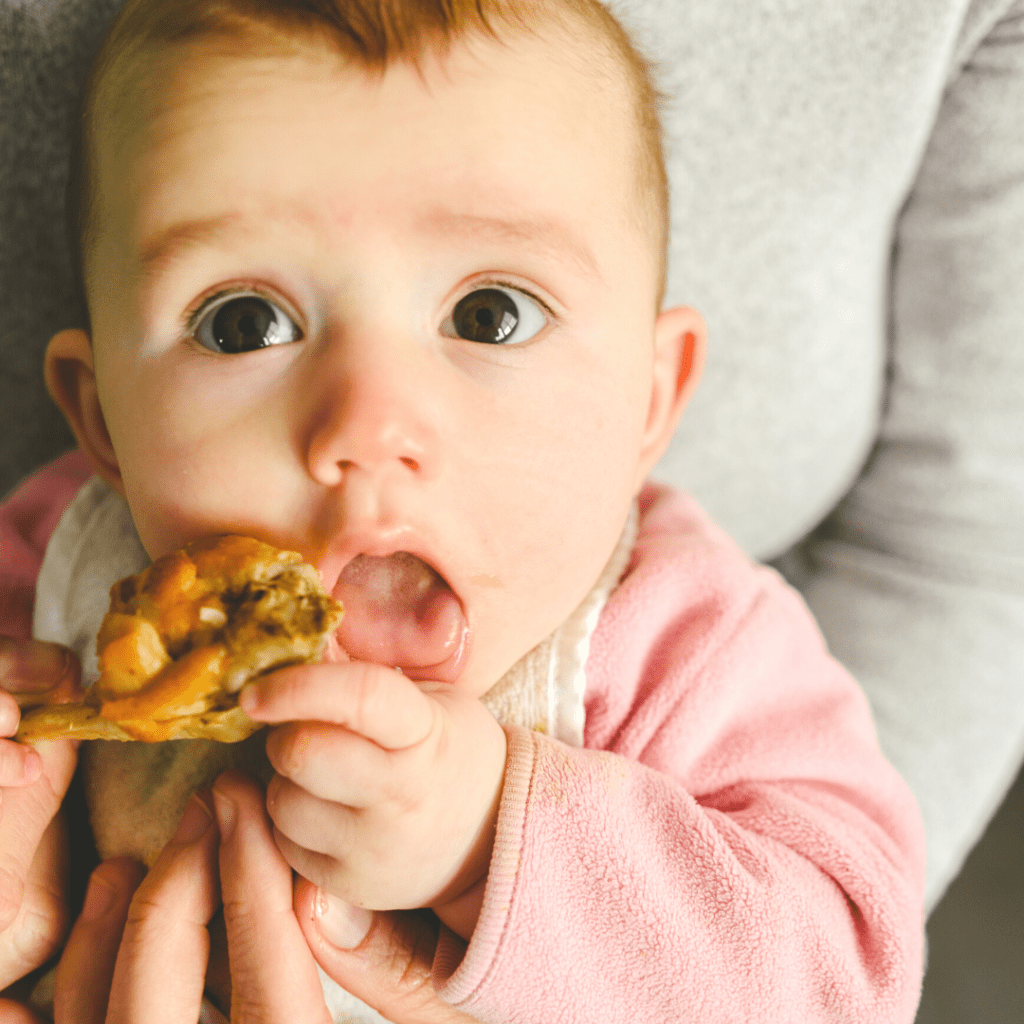
Babies build up iron stores in their body during development in the womb. These iron stores start to deplete somewhere around 6 months of age – and for a reason – because now it’s time to get supplemental iron from food!
The body cannot produce iron on its own. It has to come from food, and that’s why food before one can NOT be just for fun.
When a baby eats one meal per day – that meal should always contain a high iron food. Once they move onto 2-3 meals per day, at least 2 of those meals should include iron rich foods.
If complementary foods don’t allow babies to get the amount of iron they need, they are at risk for iron deficiency, which is unfortunately the most common nutrient deficiency in babies.
Read more about iron needs and high iron foods, here.
Food before one is for developing taste preferences
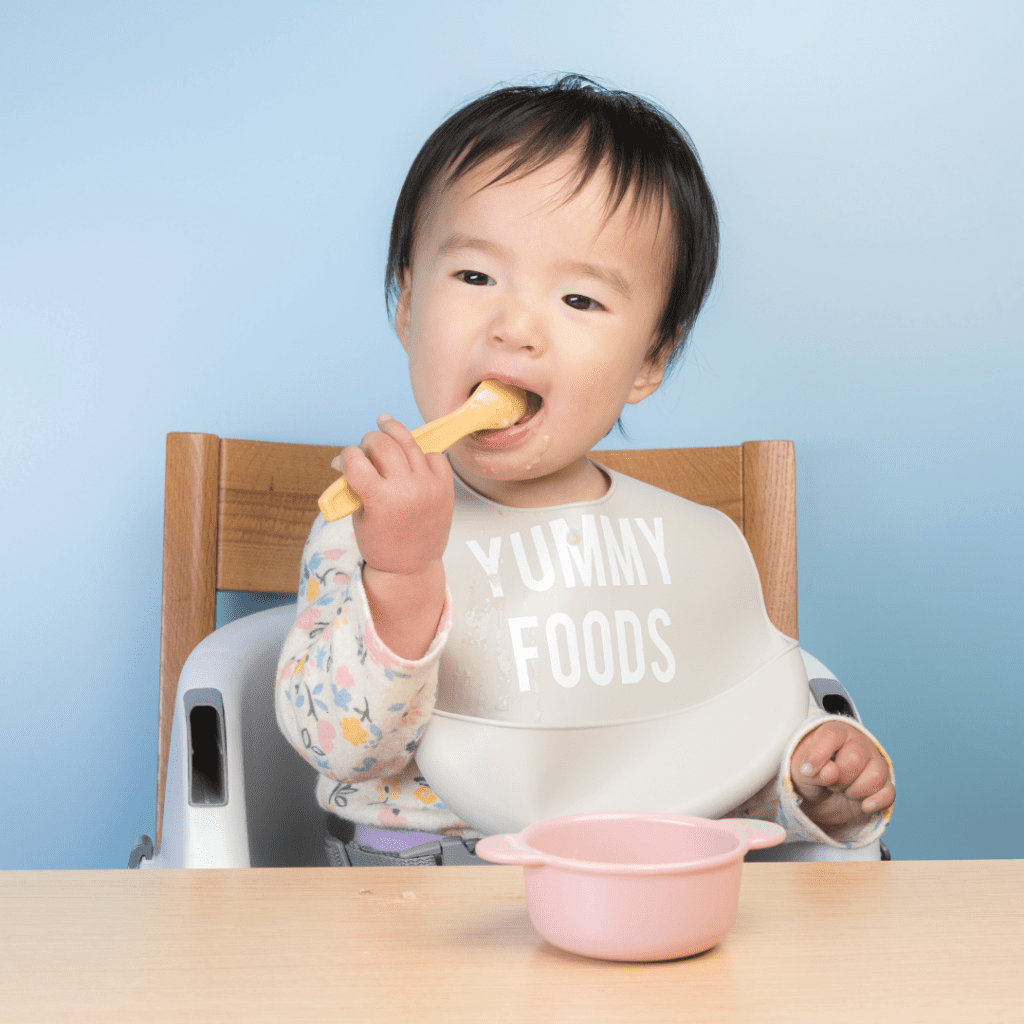
There is a critical period in babyhood between the ages of 6-9 months where babies actually develop a foundation for their taste preferences.
They must learn what is safe to eat and what is eaten by those around them in a relatively short period of time. This is in order to be able to reject any non-food or dangerous items once they become more mobile.
Babies have a natural affinity for sweet tastes (sweet things usually provide a lot of energy), and a natural urge to reject more bitter foods (bitter is associated with poisonous foods). Therefore, taste preferences for table foods we want them to eat later in life must be learned.
Research shows that frequency of exposure to tastes we want them to learn to like is actually more important than the quantity eaten. Meaning that food during that first year serves a very important purpose that actually sets the foundation for eating later in life.
To see an example of how we recommend shaping your baby’s taste buds, follow along with our realistic first week of starting solids.
Food before one is for texture introduction
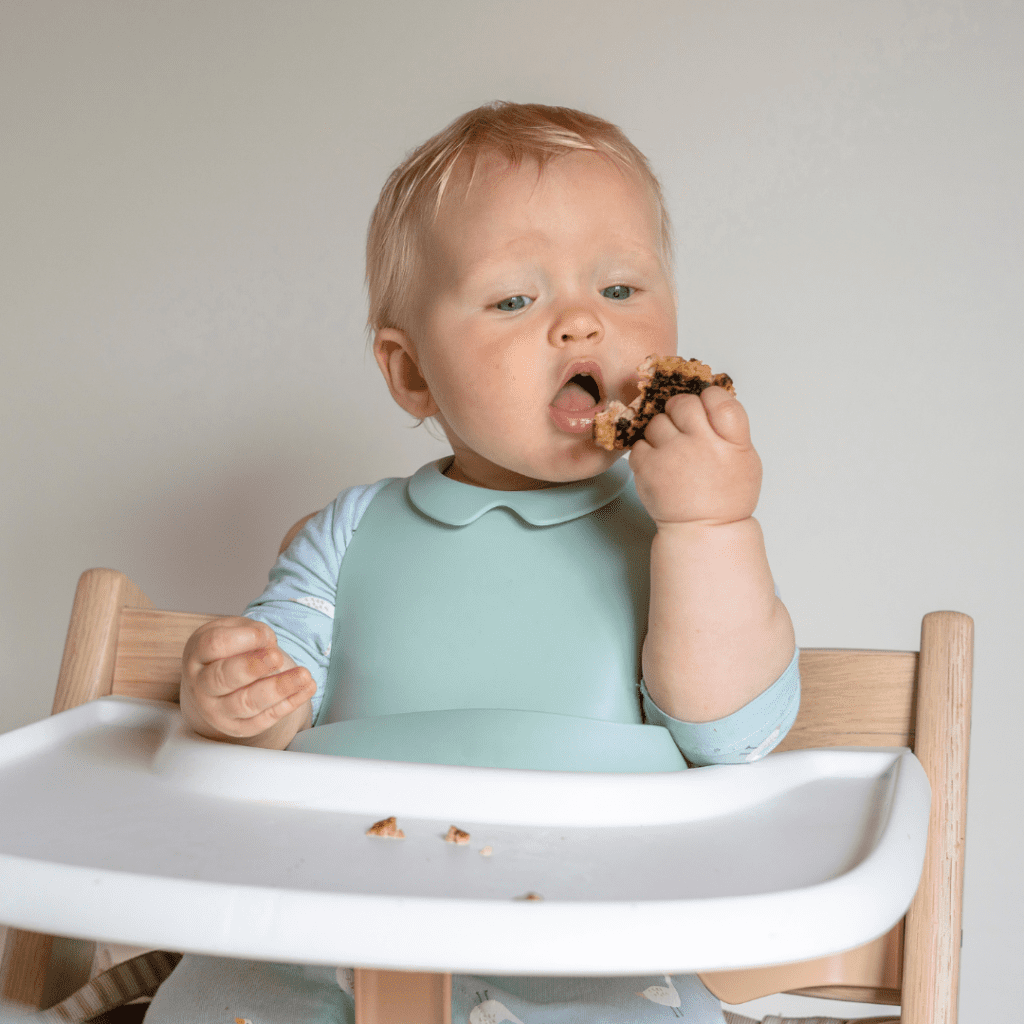
If you know My Little Eater’s content at all…you’ll know we’re obsessed with educating parents on the importance of texture introduction and progression.
There’s a huge reason why introduction of foods – and not just any food – but varied, more advanced textures of food – is actually critical during the specific period of 6-10 months. And that’s because of the development of oral motor skills – aka the complex movements of the lips, tongue and jaw required to suck, bite, munch, and rotary chew and swallow different types of food.
These are skills that don’t just come on their own. They take several years to develop [1, 2]. And research shows that introducing food frequently, and that span a variety of textures, during the period of 6-10 months, is where the most significant changes in chewing skills are seen. [3]. AKA – there is a sensitive period for texture acceptance [2].
When parents stop advancing textures because:
- their baby is gagging
- they’re overly afraid of choking
- they don’t realize it’s important
- they find it inconvenient
….we see that when their babies are finally introduced to them after 10, 11, and 12 months of age, they attempt to eat them with a “liquid swallow”. This is where food is swallowed directly over the tongue instead of moving it to the side of the mouth and munched on.
This causes them to excessively gag and makes them hypersensitive to any sensory stimulation. This makes any food with texture that requires moving it side to side in the mouth, an aversive experience. [4, 5]. And with most things, the earlier that feeding problems, including food aversions, or texture aversions, are discovered, the better.
Just to hammer this message home, we know that the best predictor of whether or not a 12 month old would accept chopped carrots was shown to be the baby’s previous experience with carrot pieces. [1]
So really, food before 12 months of age can’t be just for fun if it’s also absolutely necessary for reducing the gag reflex, development of oral motor skills, and for preventing picky eating down the road.
All, I’m sure you’ll agree, are super important.
If you’re feeling stuck with how to move your baby off purées and onto other foods with more advanced textures, or finger foods (maybe gagging and choking fears are throwing you off your mojo) – no worries – sign up for my free workshop called “Baby led weaning… but make it purées! How to move from purées to finger foods – without the fear!”

Food before one is for calories (and milk weaning)
While calories from solids don’t matter much in the first couple months of starting solids, they do matter beginning at 8 and 9 months of age. And this may come as a surprise to many, as there’s another saying out there that says “Milk is the primary source of nutrition before one”.
Just another example of a saying that often gets misconstrued to think that since milk is the primary source of nutrition, calories from food don’t matter. Parents think – my baby can get enough calories by drinking breast milk or formula, and any bites of baby foods are a bonus!
But….it’s a lot more than just a “bonus”.
Let’s first break down what milk being the “primary” source of nutrition means.
It doesn’t mean it has to be 95% of calories the entire time. Milk can be 80% of your baby’s diet and still be the primary source of nutrition. In fact, it can be 55 or 60% of your baby’s total calories, and it’s still the primary source of nutrition.
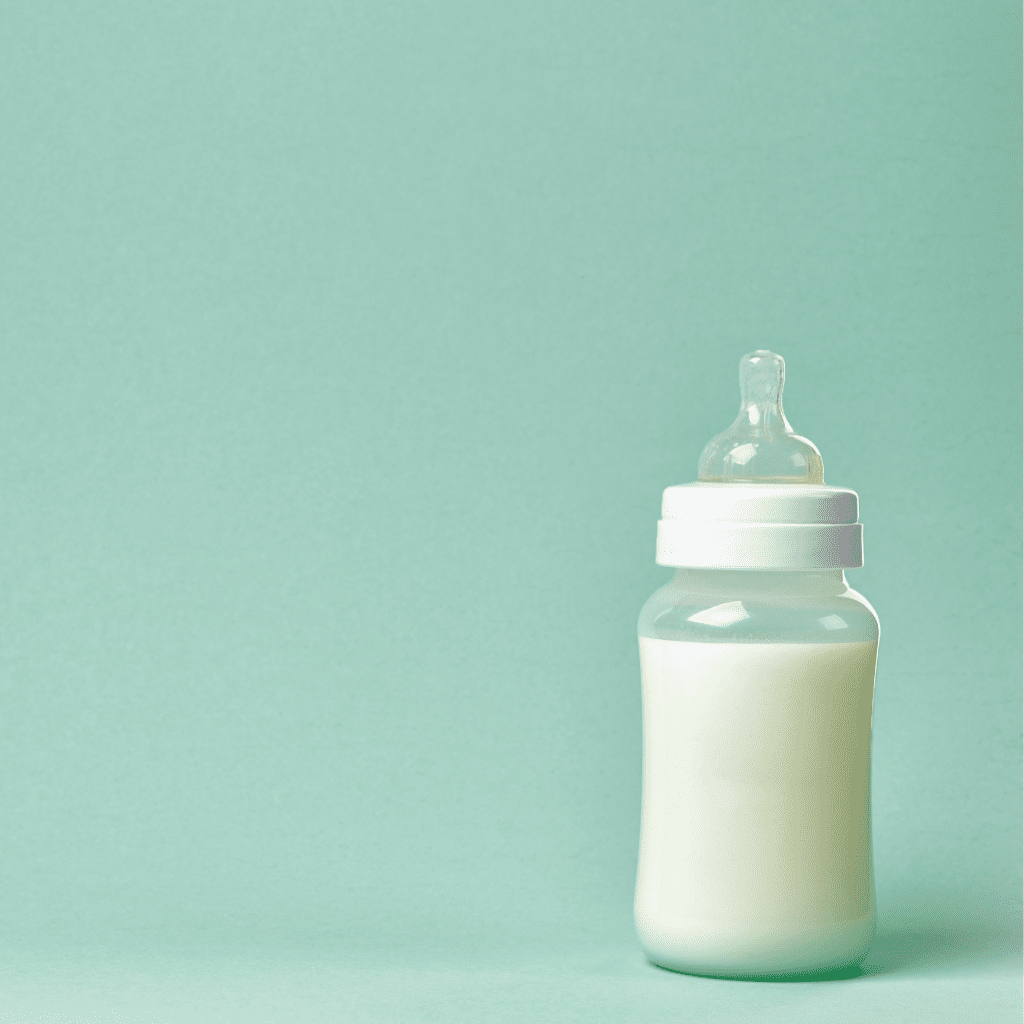
Now don’t get me wrong – this doesn’t mean that I’m here to replace your baby’s milk with solids and that milk isn’t super important.
It is!
But as you’ve seen from a previous point, your baby also can’t wake up the day they turn one year of age and all of a sudden be able to eat all the solid foods they need, in the right quantity and the right types, to meet their nutritional needs. That is, unless they’ve been practicing and getting better and better at it in the months prior.
So what we want to see is that over time, your baby’s intake of solid foods increases and starts to take up more and more of their total calories as they hit months 8, 9, 10 and 11. All while simultaneously decreasing the amount of milk consumed over this same period.
The goal is to be self-sufficient on solid foods by 12 months.
This doesn’t mean milk has to be completely weaned by 12 months (PS the real definition of weaning is just to accustom a baby to food other than mom’s milk). Not all babies will be ready to completely wean at 12 months, it could be a gradual process, and breastfed babies can continue to nurse for much longer than that – if desired.
What it does mean is that if milk was gone – your baby would be fine and able to consume enough nutrients. This is because they have developed all the skills they need to eat the same table foods at family meals that are offered to everyone else (modified for safety). Essentially, they could survive and fill themselves up on solids alone, perfectly.
Which leads me to my next point…
Food before one is for gradual skill development
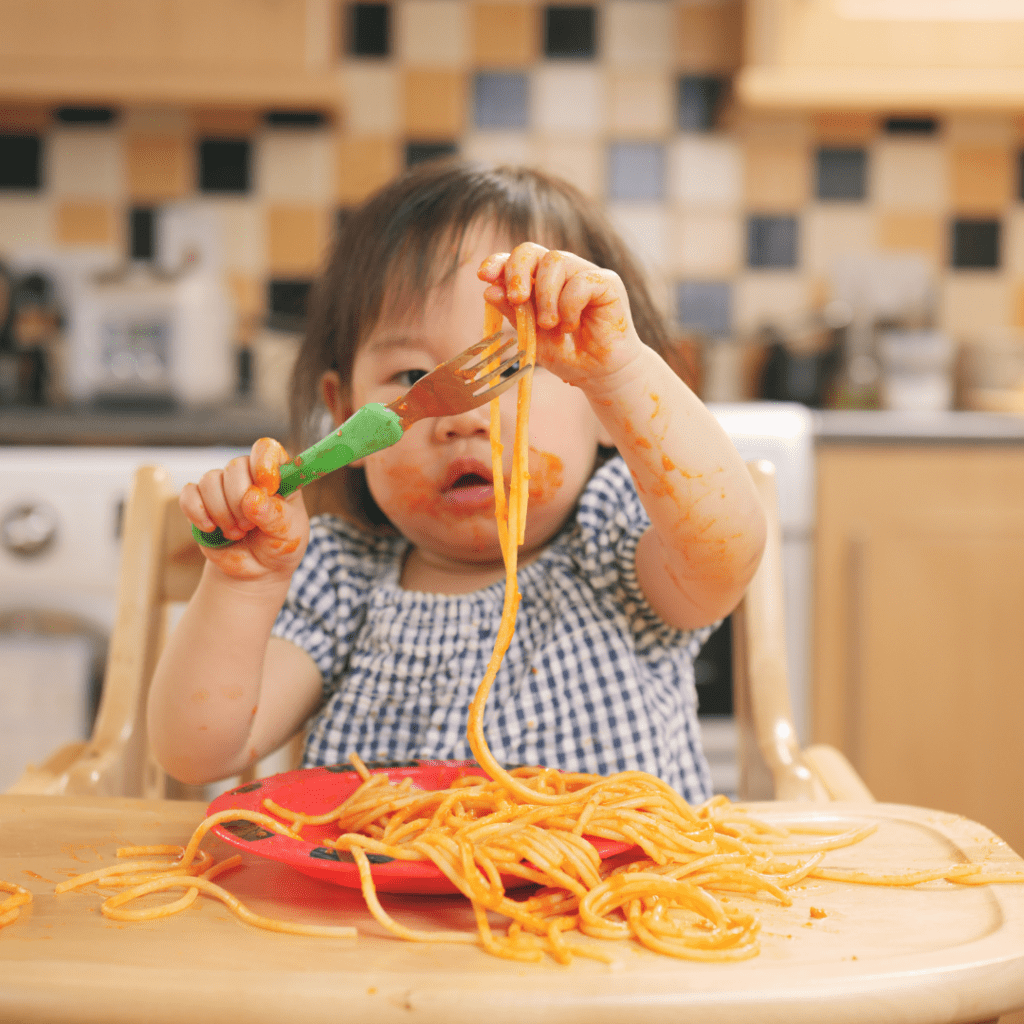
Your baby needs opportunities to eat every single day. Starting with 1-2 meals a day at 6-7 months of age, 2-3 meals a day at 8-9 months of age, and for sure 3 meals a day at 9 months of age, plus.
Babies should get better and more efficient at taking in solid food as every month passes.
If you don’t see this progress happening, take a look at your baby’s milk and solids schedule, and also at whether or not you’re offering solids daily. If interest isn’t there, it’s likely they’re too full on breast milk or formula milk.
Feeding at night also affects appetite, so look into how much milk they’re getting at night to determine if this is taking away from solid food appetite during the day.
We don’t want to ignore a baby that’s not eating much solid foods, or isn’t able to fill up on solids at mealtime, by 9 months of age. Milk is important, but don’t misconstrue the saying that “Milk is the main form of nutrition until age one” to mean that solids aren’t important!!
Just like learning to walk, your baby learns to eat. This needs to happen over time, by providing many, many opportunities that can’t just be skipped over. And lots of food before one is crucial for this to be able to happen!
PS >> If you’re concerned about how long your baby’s meals are lasting – whether they seem too fast or too slow – read more about what you should expect, here.
And finally….
Food before one is for fun

You better bet that I’m going to tell you that food before one should be an amazingly fun experience! It should be stress free, and mealtimes should be full of joy.
Watching your baby learn, squish, play with and explore their first foods is actually super important for their development, and for your memory making! One of the biggest goals during this period is to enjoy family meals together! There isn’t a need to stress over every bite eaten day to day!!
Things will change as the days and weeks go on. Some days they eat a lot, some days less. Periods of growth, illness, teething and regressions will hit, and you’ve just gotta ride that out with as little stress as possible.
Calories will be made up through milk on those days – thank goodness for that. Overall, there isn’t a prescribed amount of food your baby has to be eating every single meal, or every single day.
Click here for my free guide on how much your baby should be eating, if you want to learn more.
But over months 6-12, progress should be seen. You should notice a gradual working up in types of food eaten, different textures accepted, a decrease in milk consumed, and acceptance of 3 solid meals/day + snacks by 1 year!
If you’re looking for a step-by-step way to accomplish this gradual progression, at a pace that feels right for you and your baby, you need to check out my FREE workshop “Baby Led Weaning…but make it purées! How to move from purées to finger foods – without the fear!”
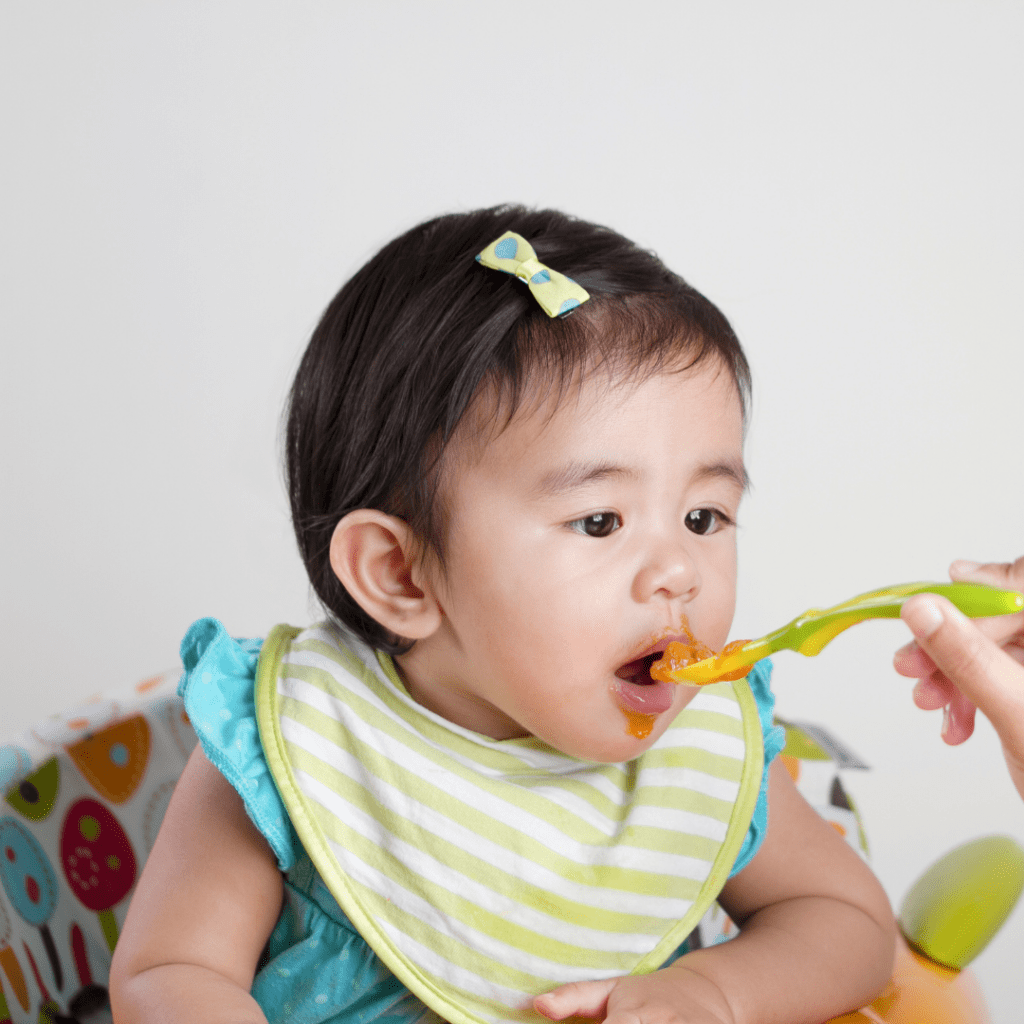
The answer to all your worries when your baby isn’t eating, is gagging all the time, is fussy at meals, etc. shouldn’t always be “Food before one is just for fun!”.
Maybe we can change the saying to say “Food before 7-8 months is just for fun”… but after that, we’ve got some helping to do mama!
Found this helpful? Pin it as a reminder and for other parents to find too!

References:
Harris, G., Mason, S. Are There Sensitive Periods for Food Acceptance in Infancy?. Curr Nutr Rep 6, 190–196 (2017).
Canadian Pediatric Society. Timing of introduction of allergenic solids for infants at high risk. Jan 24, 2019
Wilson EM, Green JR. The development of jaw motion for mastication. Early Hum Dev. 2009;85:303–11.
Wilson EM, Green JR, Weismer GA. Kinematic description of the temporal characteristics of jaw motion for early chewing: preliminary findings. Journal of Speech, Language, and Hearing Research. 2012;55(2):626–63.
Gisel EG. Effect of food texture on the development of chewing of children between six months and two years of age. Dev Med Child Neurol. 1991;33:69–79.
Coulthard H, Harris G, Fogel A. Tactile over-responsivity and early vegetable consumption; moderating effect of age of introduction to solid foods. Maternal and Child Nutrition. 2016; doi:10.1111/mcn.12228.
Harris G. Food refusal in the sensory sensitive child. Paed Child Health. 2009;19(9):435–6.
Smith AM, Roux S, Naidoo NT, Venter DJL. Food choices of tactile defensive children. Nutr. 2005;21(1):14–9.





